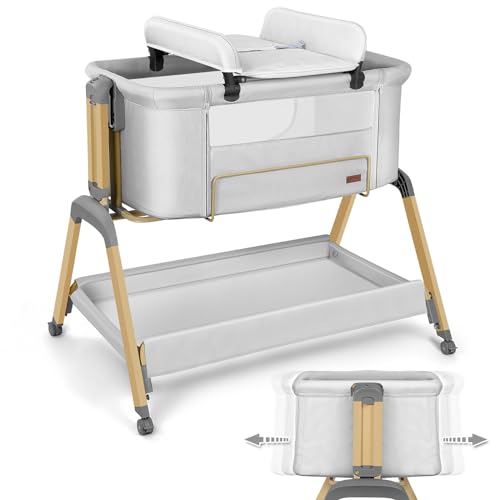The Ultimate Guide to Choosing a Baby Cot Bed: Safety, Features, and More
When it comes to inviting a brand-new baby, among the most crucial purchases parents will make is a baby cot bed. This vital furniture piece is not just where a baby will sleep; it's also a space of convenience, safety, and security. Given the plethora of alternatives available on the marketplace today, making an informed choice can be frustrating. This guide intends to streamline the procedure by covering essential features, safety requirements, types of cot beds, and a lot more.
Table of Contents
- Intro
- What is a Baby Cot Bed?
- Security Standards
- Kinds Of Baby Cot Beds
- 4.1 Traditional Cots
- 4.2 Convertible Cot Beds
- 4.3 Portable Cots
- Key Features to Consider
- Choosing the Right Mattress
- Establishing the Cot Bed
- Frequently asked questions
- Conclusion
1. Introduction
A baby cot bed functions as a devoted sleeping area for babies and is developed to provide convenience and safety. As new parents navigate the many options readily available, it is crucial to understand the different types of cot beds, security standards, and vital features to make the very best choice.
2. What is a Baby Cot Bed?
A baby cot bed is a specific piece of furnishings where babies sleep. Unlike regular beds, cot beds are specifically created for infants and supply a safe environment for them to rest. web feature high sides to avoid infants from falling out and typically included adjustable mattress heights to accommodate a growing kid.
3. Safety Standards
When selecting a baby cot bed, safety should be the primary consideration. Here are some important security standards to keep in mind:
- Certification: Ensure the cot bed meets nationwide and international security requirements, such as the ASTM International and Consumer Product Safety Commission (CPSC) regulations.
- Slat Spacing: The range between slats ought to not surpass 2 3/8 inches to avoid the baby's head from slipping through.
- Stability: Ensure that the cot bed does not wobble or shake.
- Non-Toxic Materials: Check for non-toxic finishes and products to guarantee the baby's safety.
4. Kinds Of Baby Cot Beds
The marketplace offers different types of cot beds, each accommodating different requirements. Below is an outline of the most typical types:
4.1 Traditional Cots
Traditional cots are standalone furnishings items designed particularly for infants. They usually include fixed sides and several adjustable bed mattress heights.
4.2 Convertible Cot Beds
Convertible cot beds can be changed into toddler beds, allowing for extended use. This type is a cost-effective option as it grows with your kid.
4.3 Portable Cots
Portable cots, likewise known as travel cots or playards, are light-weight and created for families on the go. They can be quickly assembled and disassembled for travel.
5. Secret Features to Consider
When selecting a cot bed, moms and dads ought to consider the following features:
- Adjustable Mattress Height: This feature permits reducing the bed mattress as the baby grows, making it easier for parents to raise the child.
- Product Quality: Look for a cot bed made of long lasting, non-toxic wood.
- Safety Features: Some cot beds include rounded edges and additional security locking systems.
- Reduce of Assembly: Check if the cot bed needs minimal tools for assembly and how simple it is to take apart.
- Storage Options: Some cot beds include integrated drawers for storing baby basics.
6. Choosing the Right Mattress
The right bed mattress is vital for your baby's sleep quality. Here are some pointers for selecting an ideal bed mattress:
- Firmness: A bed mattress should be firm enough to avoid the baby from sinking in too deep, reducing the threat of suffocation.
- Breathability: Opt for breathable materials to make sure correct air flow.
- Water-Resistance: Consider water resistant covers for easy cleansing and health.
7. Setting Up the Cot Bed
Installing the cot bed properly is vital for security. Here are actions parents ought to follow:
- Choose the Right Location: Place the cot bed away from windows, cords, and other prospective threats.
- Inspect the Height: Adjust the bed mattress height based upon the kid's age and movement.
- Eliminate Extras: Avoid placing pillows, blankets, or packed toys inside the cot bed when the baby is sleeping.
- Inspect Regularly: Regularly examine all parts and screws for wear and tear.
8. FAQs
Q1: At what age should a baby shift from a cot to a bed?
The majority of kids transition to a young child bed between 18 months to 3 years, depending on their advancement and private needs.
Q2: How can I guarantee my baby sleeps safely in their cot bed?
Make sure the cot is devoid of soft bed linen, toys, and anything that might obstruct the baby's breathing. Follow all safety guidelines thoroughly.
Q3: Is it necessary to have a separate nursery for the cot bed?
While lots of moms and dads choose to have a separate nursery, it is not a need. As long as the cot bed remains in a safe and peaceful environment, it can be positioned in the parents' bedroom.
Q4: When is it safe to lower the bed mattress?
Typically, the mattress ought to be lowered when the baby can pull themselves up or when they can sit individually, generally around 6 months.
9. Conclusion
Choosing the best baby cot bed is an essential aspect of preparing for a brand-new arrival. Moms and dads must prioritize safety, performance, and quality, ensuring that the cot bed satisfies their household's unique needs. By taking the time to research and understand different kinds of cot beds, moms and dads can offer a safe and comfy sleeping environment for their youngster to flourish.
With mindful consideration, parents can guarantee that the cot bed is not simply a piece of furniture, but a sanctuary where their baby can sleep comfortably throughout those crucial early years.

